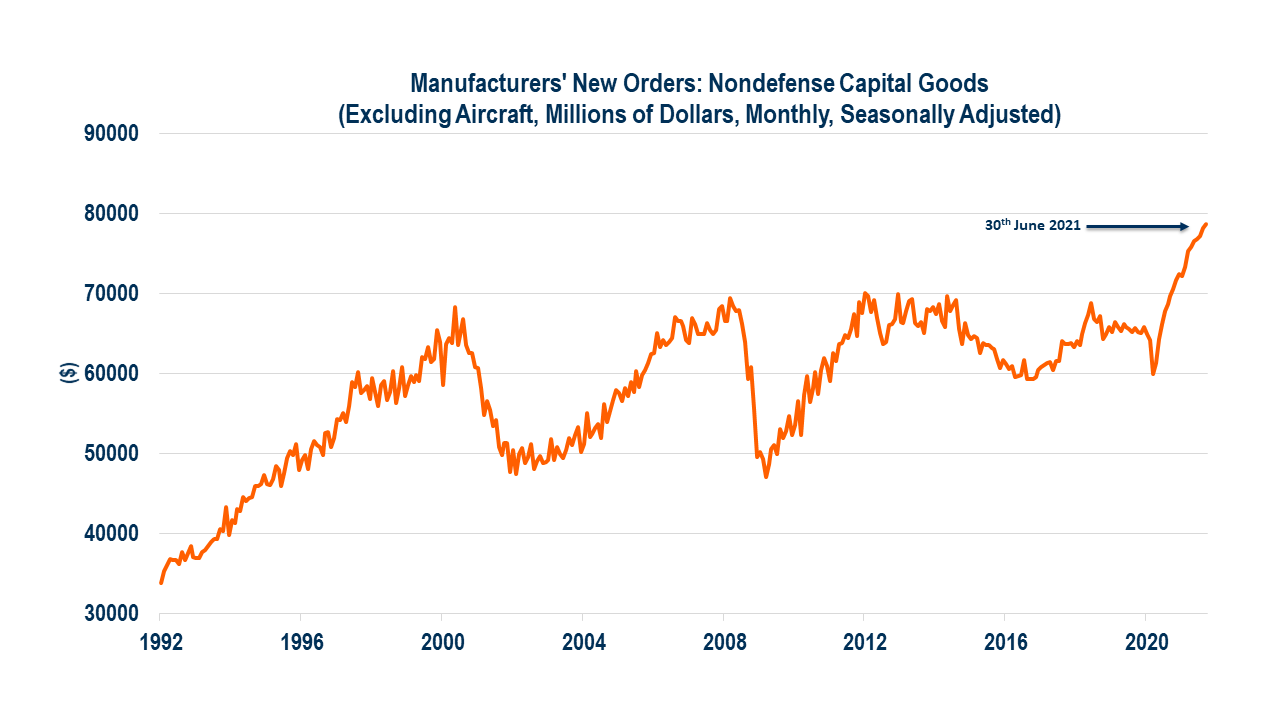“The case for digital transformation has never been more urgent or clearer. Digital technology is a deflationary force in an inflationary economy.”
Satya Nadella
With inflation back and at the highest it’s been in decades, Satya Nadella used Microsoft’s latest earnings call to position digital technology as the solution for companies to help compensate for price increases.
The argument certainly isn’t a new one, technological innovation is widely known to be one of the best ways for companies to reduce costs and improve productivity.
In March 2020, Edward Yardeni positioned ‘Disruption’ as one of the four deflationary forces keeping a lid on inflation (the other three were Détente, Demography, and Debt).
Yardeni highlighted that the impact of technology on the economy had not been given enough attention adding, “technology is inherently disruptive and deflationary since there is a tremendous incentive to use it to lower costs across a wide range of businesses.”1
With recent inflation at uncomfortably high levels, digital technology and its associated productivity gains could take on much more prominence in 2022 and beyond.
Cloud Adoption is becoming a Necessity
Microsoft reported revenue of $43bn for its first quarter of 2022, a 22% increase on the previous year’s first-quarter results, driven by growth in cloud adoption. 2
And the company isn’t alone in seeing record cloud growth – in 2020 and 2021 cloud computing exploded as companies rapidly went digital in response to the global pandemic.
Although pre-Covid, the cloud transition was already underway, we saw the pandemic serve as an accelerant, with 70% of organisations using cloud plan to increase their cloud spending in the wake of Covid-19. 3
In 2022, we expect to see a continuation of this swift migration and growth. Leaders in every industry are realising they risk extinction by failing to migrate to the Cloud, meaning more and more companies are seeing cloud computing as an essential business expenditure.
According to the latest forecasts from Gartner, global spending on cloud services is expected to reach over $482 billion in 2022, up from $313 billion in 2020. And this growth trajectory looks set to continue.
So what does this mean for thematic investors?
Well, as we highlight in another thematic article Cloud Computing and Cybersecurity: The New Digital Utilities? companies at the forefront of the cloud computing industry are so essential to today’s economy that they have effectively become digital utilities.
This means it will remain a key area of investment for the majority of companies, with the latest data from Gartner also showing that by 2024 the average company aspires to have cloud spend represent 80% of its total IT-hosting budget. 4
We may see this accelerate even further in an inflationary environment, as companies may look to invest in digital technology to offset higher costs and boost productivity.
In the latest earnings call, Nadella was asked about how digitalisation is helping businesses to compensate for price increases. He said: “In an inflationary environment, the first place any business should go to is how to really ensure that they’re able to get productivity gains. And even dealing with constraints, for example, if you have supply chain constraints, one of the things you want to do is run your factories at the efficient frontier.”
This concept is an interesting one – that companies need to be driven as far as possible in the name of efficiency.
This is where companies could really unlock the potential of cloud computing, with its speed, scale, innovation and productivity accelerating or enabling innovative technology solutions which in turn could reduce costs, drive efficiency and potentially transform business operations. To this end, McKinsey recently projected that cloud adoption could potentially drive $1 trillion in business value.5
Will this increased productivity protect investors against inflation?
The good news: companies are investing again. An uptick in higher capital expenditure should correspond to a boost in productivity. As the chart below from the Federal Reserve Bank of St. Louis highlights, Manufacturers’ new orders (ex. Aircraft and military spending) reached the highest figure on record in June 2021 (not adjusted for inflation).

Not only are companies investing, but the current climate means they also have a strong incentive to do so.
As firms report challenges in attracting new workers combined with reports that wages are rising quickly: companies are facing worker shortages which has driven them to spend on capital goods (like machinery and infrastructure) instead, to boost productivity.
Whether this translates into increased investment in digital technology remains to be seen, but within this context Nadella’s investment case is compelling.
One last point on productivity, we may see a further boost coming from President Biden’s landmark $1.2 trillion Infrastructure Bill.
The Bill is the largest federal investment in the country’s infrastructure in decades, including allocating $550bn to upgrade highways, roads and bridges, and rail networks.
It also sets aside funding for high-speed internet, and EV charging points across the country. It appears that cloud adoption isn’t slowing, if anything it’s accelerating, and digital technology has many tailwinds over the coming years.
Sources:
1 Excerpt from Fed Watching for Fun & Profit, Edward Yardeni, March 2020
2 Microsoft Q1 FY22 Earnings Call
3 Gartner, 2020
4 Gartner, 2021
5 McKinsey, 2021
References to specific companies should not be construed as a recommendation to buy or sell shares or other financial instruments issued by those companies, and neither should they be assumed profitable. You should consider the fund’s investment objectives, risks, and charges and expenses carefully before investing.




